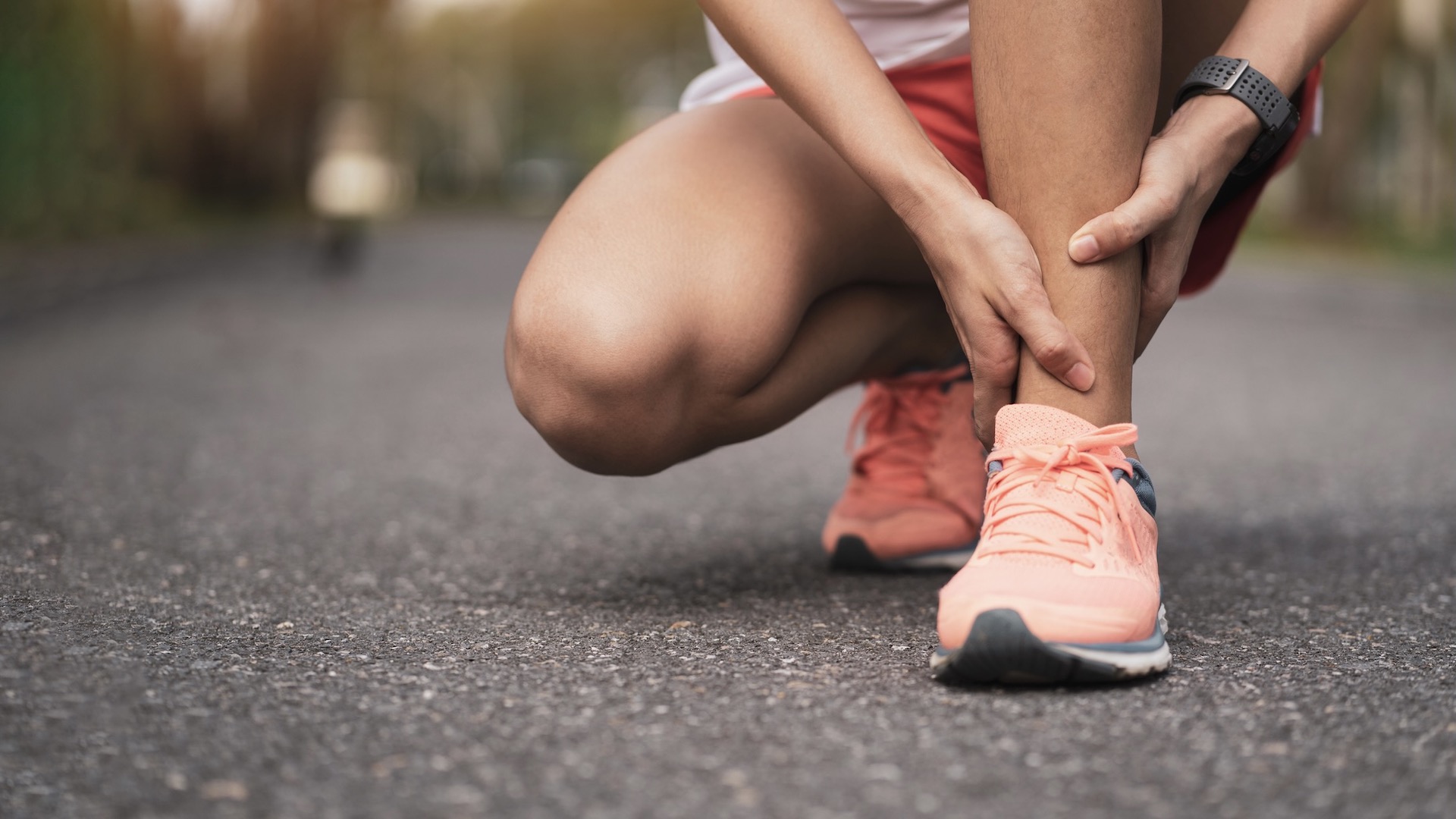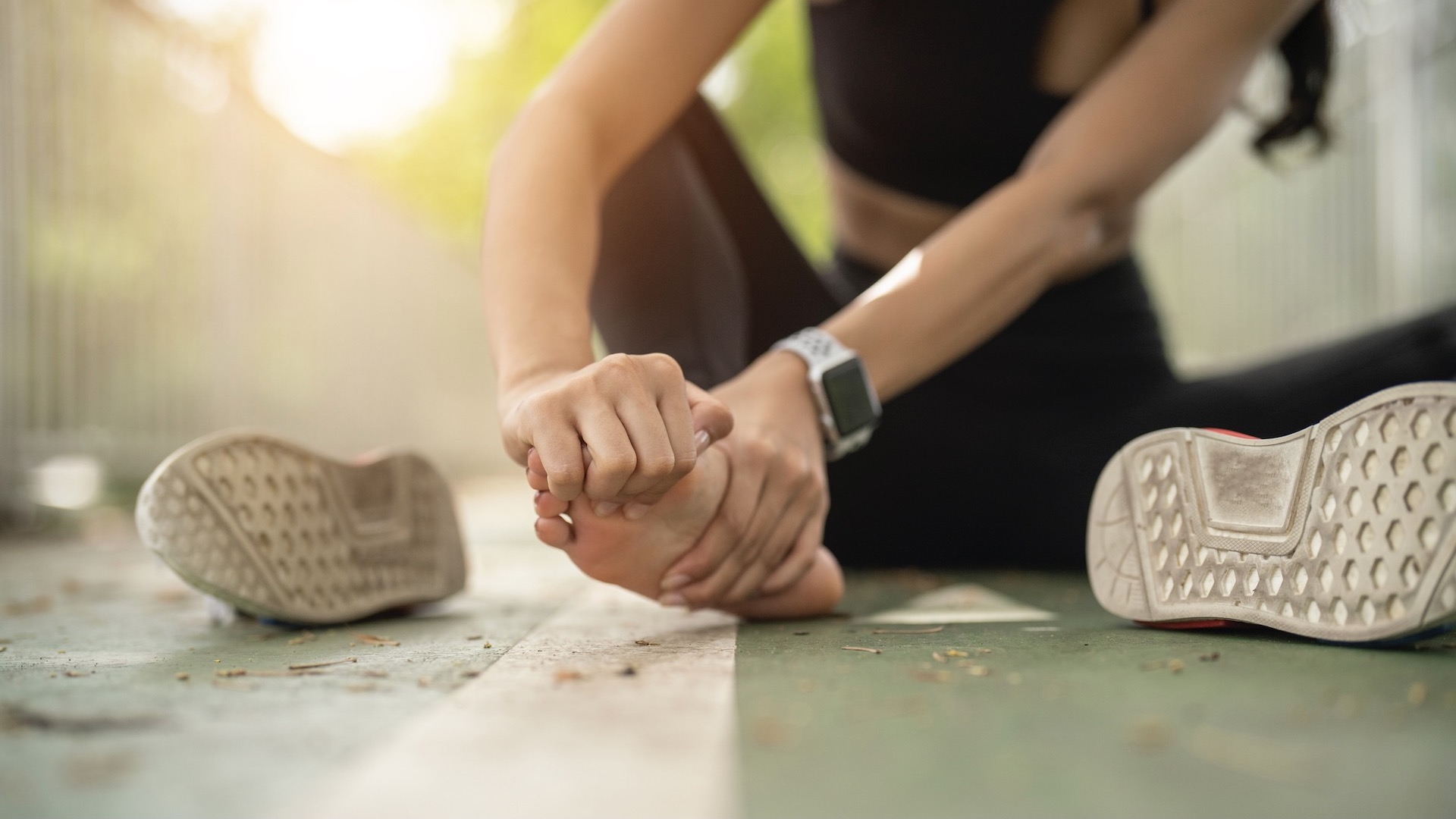Foot pain when running – what causes it and how to handle it
A guide to common foot issues for runners and tips for avoidance and recovery

Foot pain is a common complaint of runners. Issues arise for many reasons but the obvious factor is that running is a repetitive movement and our feet take a pounding.
Even if you wear cushioned running shoes, your feet can suffer pain and injuries because there is a greater impact on the feet when running as compared to walking.

Most common foot pain when running
We take a look at some of the most common foot pain issues, the causes, ways to aid recovery, and how to avoid in the first place.
Plantar fasciitis
Plantar fasciitis is one of the most common causes of foot pain in runners. The plantar fascia is a thick ligament that runs along the bottom of the foot from the heel bone to the base of each toe.
If you are suffering with this type of foot pain from running, you’ll feel it as a sharp or stabbing pain in the heel area. You might also feel a tight pain on the sole of the foot. Usually with plantar fasciitis the pain is worse when you get out of bed in the morning.
Plantar fasciitis is usually caused by too much tension and stress on the plantar fascia and this can lead to small tars in the tissue and inflammation.
Advnture Newsletter
All the latest inspiration, tips and guides to help you plan your next Advnture!
Issues can arise from running long distances without the right build up, as well as having high-arched feet and wearing running shoes that do not properly support feet.
To prevent the onset of plantar fasciitis it’s important to follow a structured training programme that ensures there are no sudden increases in training load.
Strengthening workouts – such as bodyweight exercises for runners – can also be a benefit because this means the body is more physically balanced when running.
You should also seek expert advice on the type of running gait that you have and the right running footwear to suit this.
If you do end up with the much-dreaded plantar fasciitis, you need to follow the advice to rest and ice. Many experts recommend a tennis ball, or similar, and a bottle of reopen water to massage under the foot.
Also you should aim to perform stretches on the calf muscles and the plantar fascia.
Stress fractures
Foot pain when running can be caused by stress fractures, which are described as small breaks in the bones of the foot. These cause sharp and localized pain.
All bones in the foot can be prone to stress fractures, but it’s often the metatarsals – the bones of the forefoot – that are most likely to be affected.
The most common cause of stress fractures for runners is doing too much running, or increasing the amount of running too quickly. Another issue can be running for too long on hard surfaces without the right footwear, or adequate cushioning. See our guide to the best trail running shoes if you need some suggestions for off-road footwear.
As with plantar fasciitis and other foot pain issues for runners, you need to rest if you suspect stress fractures. Seek the advice of an expert after this.
The likelihood is that if it is a stress fracture, you’ll need to stop impact activities, such as running for at least six weeks to allow the fractures to heal.
When you do return to running, it’s vital that you don’t do too much too soon or slip back into the bad habits that caused the issue in the first place.

Toe pain
One of the most common toe pain issues for runners is called Hallux rigidus. This is a problem of the joint at the base of the big toe and runners normally felt pain and stiffness in the joint. This can lead to a difficulty in bending the toe.
The big toe plays a big role when you run and helps you to propel yourself forwards. It is far easier to run if you have the ability to bend the toe and without pain.
Hallux rigidus can be caused by osteoarthritis or inflammation in the joint. The chances are this issue comes from overuse or it may be due to an injury, such as stubbing your toe.
The treatment for Hallux Rigidus is best advised by a medical expert. You need to try to gain some movement in the toe again. Gentle stretching and mobilising of the toe and the joint can help over time.
It might be that you need to take a break from running, too, to allow the joint to recover.
Heel fat pad syndrome
Another foot pain issue when running can be caused by heel fad pad syndrome. This describes the thinning of the fat pad that supports and cushions the heel.
The fat pad is the part of the foot that cushions the heel and helps to absorbs the shock of running on hard surfaces.
Sometimes the pads become irritated due to over-use or because you have overly jarred the base of the foot on a hard surface or obstacle.
There are different ways to treat heel fat pad issues, including massage. You can do this yourself with your hand for with a massage gun. Try not to over irritate the pad with too much massage though.
Another solution night be switch from soaking in icy water and then switching to warm water several times a day.
Other experts will recommend taping the heel with kinesiology tape with the aim of improving blood flow to help to decrease the inflamed pad.
Foot tendinopathy for runners
Tendons connect muscles to the bones and allow us to move our limbs. Just like ligaments and bones, tendons can suffer due to overuse or when the body is misaligned or unbalanced. Tendinopathy describes a combination of pain, swelling and impaired performance.
Tendinopathy can occur in different places of the foot, such as on the side of the ankle and in the Achilles tendon. Runners will often find the tendinopathy pain occurs when running and continues after a run and during other routine activities, such as walking.
The tendon can be painful to touch and it is often worse first thing in the morning when you get up, or after sitting still for a while.
As with other foot pain issues form running, tendinopathy is often caused by increase or changes in training load or a new running surface.
It’s important to ask an expert about how to treat and control tendinopathy, but the chances are you will be given exercises that focus on optimal loading and strengthening of the affected tendon. An example might calf raises that involved a slow and deliberate lowering of the body weight.
By following this guide to foot pain when running – what causes it and how to handle it – you will hopefully recover from any issues sooner rather than later.
- The best trail running socks: keep your feet warm and comfortable off-road

Fiona Russell is a widely published adventure journalist and blogger, better known as Fiona Outdoors. She is based in Scotland and is an all-round outdoors enthusiast with favorite activities including trail running, mountain walking, mountain biking, road cycling, triathlon and skiing (both downhill and backcountry). Aside from her own adventures, Fiona's biggest aim is to inspire others to enjoy getting outside and exploring, especially through her writing. She is also rarely seen without a running skort! Find out more at Fiona Outdoors.
